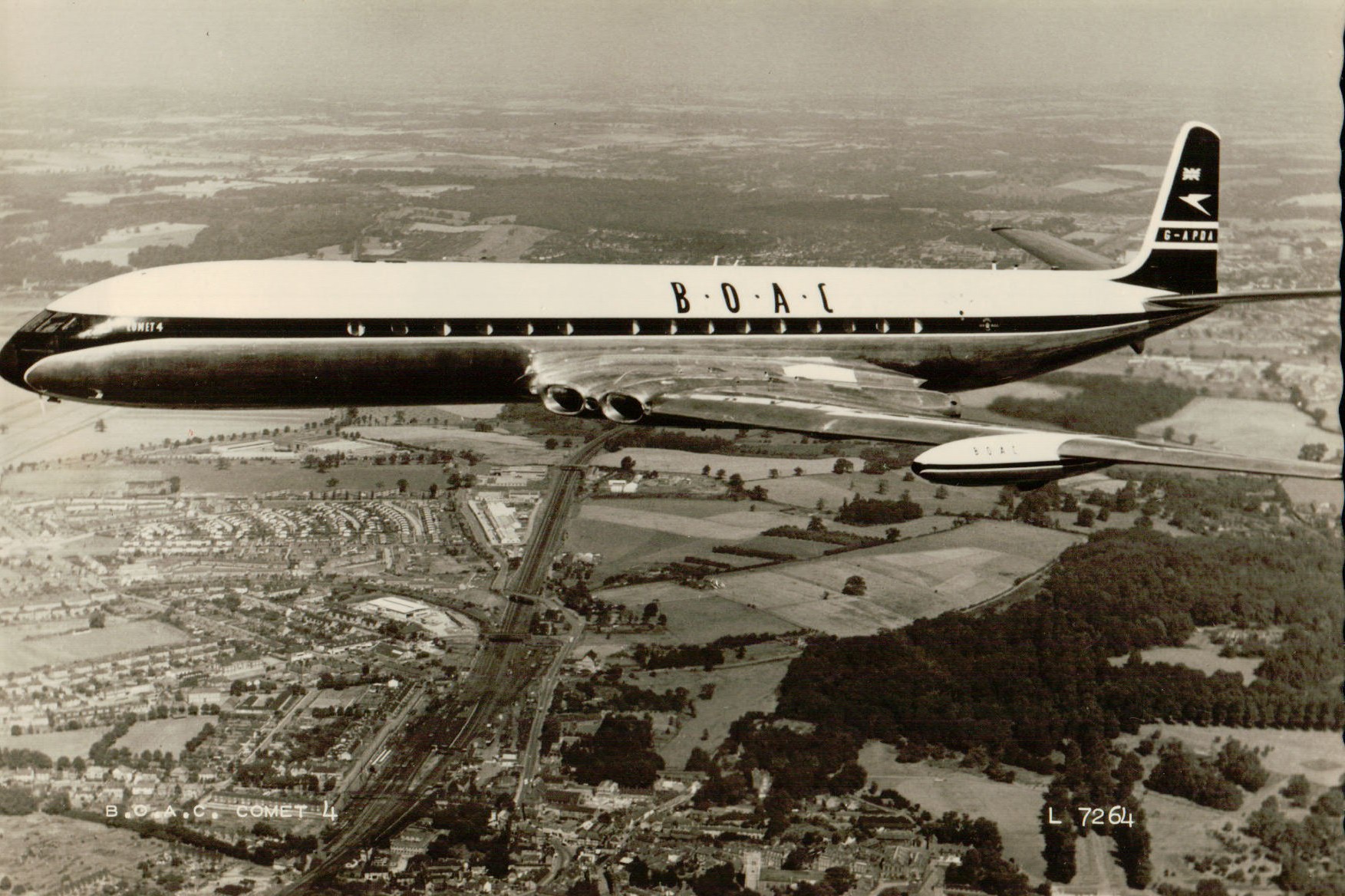
27 July 2019 marks the 70th anniversary of the first flight of the de Havilland Comet – the world’s first commercial jet airliner.
Developed in the years following the Second World War, the Comet revolutionised air travel and brought the world closer together thanks to the higher speeds it could fly at. It was also able to fly above the weather, offering a smoother, more comfortable flight for its passengers.
The initial variant, the Comet 1, entered service with British Overseas Airways Corporation (BOAC) in 1952 following a period of testing. However, a series of unfortunate accidents and crashes led to the aircraft being grounded until the cause could be determined.
All Comet 1s were withdrawn from service and were scrapped or had oval windows installed and strengthening modifications incorporated. Comet 2s in production were also modified but these only ever went to the RAF as all airlines cancelled orders for this and the Comet 3, the latter making its first flight in July 1954. This aircraft was used in development flying and route proving for the much larger, longer range and ultimately much more successful Comet 4.
This allowed the rival Boeing 707 and Douglas DC-8 airliners to catch up and capture a much greater share of the market. de Havilland was forced to rethink its airliner, coming up with the Comet 4 and 4B as the ultimate variants, which offered more seats and a greater range.
In fact, the Comet 4 still managed the accolade of becoming the first jet aircraft to fly passengers across the Atlantic in October 1958, ahead of the 707.


Comet Survivors
The last Comet to fly was a military example belonging to the Royal Aircraft Establishment. It flew into Bruntingthorpe Airfield in 1997 to become part of the Cold War Jets collection, and is maintained in taxiable condition today, registered G-CDPA. Here’s a video of it recently.

Comet 1A at Cosford
Other Comet aircraft that survive include the following:
- Comet 1A fuselage, F-BGNX, at the de Havilland Museum
- Comet 1A, G-APAS, at the RAF Museum Cosford
- Comet 1A cockpit, G-ANAV, at the Science Museum Store, Wroughton
- Comet C2 cockpit, XK699, at Old Sarum Airfield
- Comet 2R cockpit, G-AMXA, at the Al Mahatta Museum, Sharjah, UAE
- Comet 2R cockpit, XK695, at the de Havilland Museum
- Comet 4 G-APDB, at Imperial War Museum Duxford
- Comet 4B G-APYD, at the Science Museum Store, Wroughton
- Comet 4C, G-BDIX, at the National Museum of Flight, Scotland
- Comet 4C, G-BDIW, at Hermeskeil Musuem, Germany
- Comet 4C cockpit, G-BEEX, at the North East Land, Sea and Air Museums, Sunderland
- Comet 4C, N888WA, at the Museum of Flight Foundation, Everett, WA
 Flying Firsts
Flying Firsts
Flying Firsts is a new book from Martyn Cartledge. It covers the introduction to flight of hundreds of aircraft type and variants, including the de Havilland Comet, with colour photographs, stats, facts and easy references.
You can order the book now at this link: https://destinworld.com/product/flying-firsts/





5 comments
My mother Doris Perry was on the flight from Calcutta in 1953 pregnant with me but she was ill and the captain saved our lives by taking us off the actual flight before it took off. I am now 66 years old living in Wales.
Wow, what a lucky break! Thanks for sharing.
Matt
I flew from Toronto to London with my 18 mnth old son in late May 1958. My first flight on a large plane which has grown into the 100’s. That flight though is still my most memorable because not only was it 2 hours late in leaving because of engine trouble but 2 hours into the flight we were told that there was again engine trouble and we were being diverted to Goose Bay, Labrador. Not what a young mother with baby wants to hear. Very interesting interlude and 15 hours late, all arrived safely. There were two very anguish grandmothers happy to see us as we left the plane.My last 2 flights were this year may be my last as I am now going into 88, Love to fly
Fascinating story Marguerite! Thanks for sharing.
Having read the Comet details I may have missed where the Comet was built, apart from being built at Hatfield it was also built at Broughton Flintshire as I worked on it for many years. During the period I worked on it and before I became a foreman I was selected to build a large settee frame for King Saud of Saudi Arabia.